With a measuring tape and these handy tricks and tips, you’ll find you have more storage space than you ever imagined.
Many of my blog articles focus on the need to purge unwanted, unused, and outdated possessions. While I still stick firmly to the “If you’re not using it, get rid of it” philosophy, there are indeed many items that we do need and use on a regular basis. If we want to maintain a pleasant and uncluttered home, these items need to be properly stored.
Whether you live in a palatial home with an abundance of walk-in closets or a small apartment with barely a corner in which to wedge a bookshelf, there are some clever solutions for maximizing the space you do have.
Bookshelves
Linear feet is a critical measurement to keep in mind prior to moving to a new home, refurbishing your existing space, or adjusting your storage solutions. Grab a measuring tape and measure the linear feet—depth and width—of any built-in or standing bookshelves you may have. Once you know how many feet you have, you can measure and assess a row of books to see exactly how many will fit.
Shelves are generally designed for deeper books. By pushing your books flush to the back of the shelf, you’ll allow room for decorative bric-a-brac, eliminating clutter on tables and other surfaces. This makes dusting a lot easier, and offers a nice visual juxtaposition. Another way to save space is to store some books standing across, while laying others flat on top of one another.
I’ll pause a moment here to reiterate my oft-stated maxim: If it’s outdated, get rid of it! No one needs to keep encyclopedias. Disposing of them is as refreshing as purging your closet of those outfits we considered stylish in the 1980s. Those college chemistry books are now scientifically defunct; if you’re hankering to apply a Bunsen burner to 20 grams of ammonium dichromate, I suggest you consult the Internet, not a dusty old tome from the 1970s. And yes, yearbooks are a sentimental treasure to keep.
There are other tricks you can apply to make the most of your bookshelf space. In my new home, I needed to build bookshelves, but did not want to forfeit a wall that could be utilized for a large piece of furniture. Instead, I constructed bookshelves that wrap around a window and run floor to ceiling. I use the resulting shelf right in front of the window to display a work of art and a sculpture.
Clothes Closets
Measuring linear feet is also critical when it comes to hanging clothes. First, measure the linear feet of the long-hanging clothes in your closet, such as evening gowns, dresses etc. Note that if you are very tall, you must also consider height for the long-hanging area of your closet. You don’t want your dresses trailing on the floor!
Then take your short-hanging clothes—skirts, trousers folded in half, shirts, blouses—and measure the linear feet of those. By using double-hung closet rods, you will double your hanging space for such articles.
Some closets are rather deep, and clothing can be hung on one row in front of the other. Use the front rack for your winter clothing, keeping summer items in the back—and then rotate the racks when the seasons change. If you want to make your life truly easy, consult a closet design company that can help you install hanging bars that automatically rotate front to back and/or top to bottom.
Deep closets can also afford space for shoes. Buy clear, plastic lidded boxes. Wipe off shoes and soles before storing, and stack the boxes 2-4 high along the sides of the closet or the top shelf, depending on its height. Keep winter shoes (or shoes that are currently in use) on your shoe rack. This neat solution helps you to maximize every square inch and every linear foot, and you will still have plenty of room to walk in and grab that perfect outfit. It will also keep things off the floor so it can be dusted or vacuumed.
“But my closets are tiny!” some of you may be wailing. “I can barely get an arm in, let alone walk in!” First of all, you can eke out a few precious inches by switching to skinny hangers such as Huggables, which you can find at The Container Store. These hangers are very thin but durable, and come with a velvety cover so that clothes don’t slip off. (Certain garments, however, do require a hanger with a nice broad shoulder. You don’t want to get little lines in the shoulders of an expensive jacket. As for wire hangers, avoid at all costs—Mommie Dearest got that one right!)
A few more inches can be gained by removing the plastic covers that come back from the dry cleaners. The plastic doesn’t breathe, collects static, and attracts dust anyway.
Yet another way to save space is to ask the dry cleaner to clean, store, and return your off-season clothing. Regardless of where you store your clothing, it’s very important that it is laundered/dry cleaned beforehand—hungry moths will go for the slightest residue of food or any skin cells that flake off on your clothes.
Still craving space? I frequently see a closet in the bedroom that has hollow dead space on either side. If you are so inclined, you can break into that dead space and put in new doors, thereby widening your closet dramatically. It’s actually less expensive than buying a new bedroom set. And that brings us to…
Drawers and Bureaus
Hands down, shelves are better than drawers. Most of my clothing is on shelves. Drawers, for the most part, are terrible for storage, and most bureaus are not worth the money you spend on them. Why? Clothing gets lost and muddled in deep drawers, and it’s impossible to see what’s on the bottom without rifling through articles you’re trying to keep folded and neat. Have you noticed how rarely you wear the T-shirt on the bottom of the pile in the drawer? You are much better off with lingerie-depth drawers (approx. 4 inches deep), or shelves where you can stack and see/access anything. If you can purchase a bureau with shallow drawers, you will find it much more practical.
I like to fold my T-shirts and stack them on shelves or roll them, and then lay them down in 2-3 rows in a shallow drawer. You can get in as many shirts, if not more, than in one of those deep drawers. Plus it’s easy to see what you own.
The same goes for undergarments. It’s much smarter to fold them and stack them in the lingerie-depth drawers, much like they do in a lingerie store, than to fish around wildly for what you need.
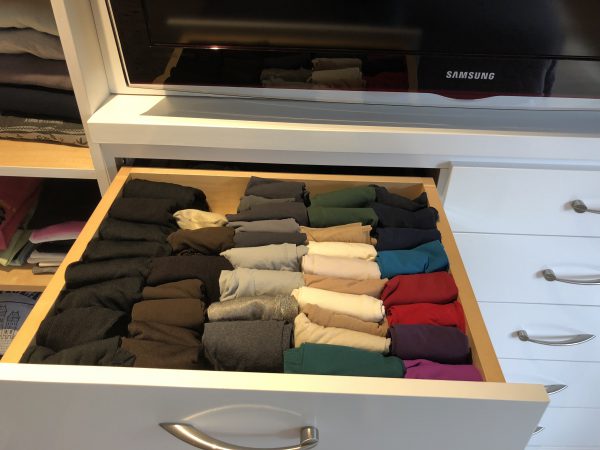
Linens and Things
Linens: Not every home has a massive linen cupboard. Perhaps you have half a dozen full-length tablecloths taking up an entire hall closet. I would gently suggest that you may not need or use all those tablecloths, and that you get rid of them. There is no market for them, and nowadays people tend to use beautiful placemats for their dinner settings. If you don’t use them and your children don’t want them, donate them to the Humane Society. They will use them as bedding for the animals. The same goes for sheets and towels that have seen better days.
Overlooked Space: Another storage tip is to consider overlooked space underneath the stairs. Many homes have dead space in this area, which can be opened up to store luggage, toys, and things that you don’t necessarily need to use all the time.
Music: Your CDs no longer need shelves as they can all be uploaded to the Cloud.
Unless you are a serious diehard, music buff, you can switch to Sonos rather than a hard-wired, multi-unit sound system that requires a cabinet.
Photos: Your priceless photos can be scanned into the Cloud and saved for generations to come, whereas photo albums that are not archival will eventually yellow and your photos will decay. Save your storage space by digitizing these memories. The same goes for diplomas and honorary certificates.
Do you have a storage conundrum? Feel free to ask me a question, and I will address it here in a future blog. If I don’t hear from anyone, I will—at least until next season—close the door on this particular storage unit.
Best wishes,
Sharon
646-784-3073
www.360demenager.com
Subscribe to Receive My Newsletter:

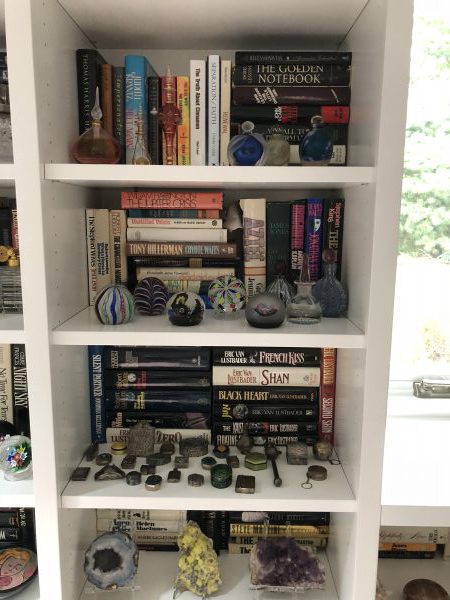
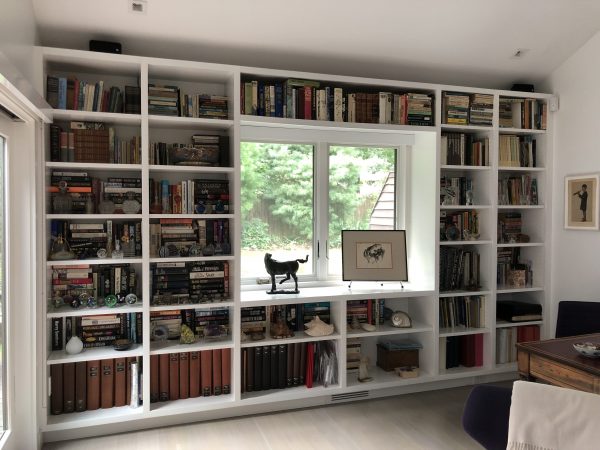
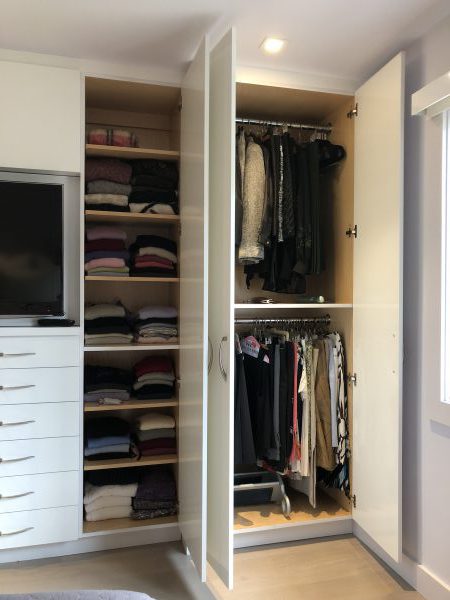
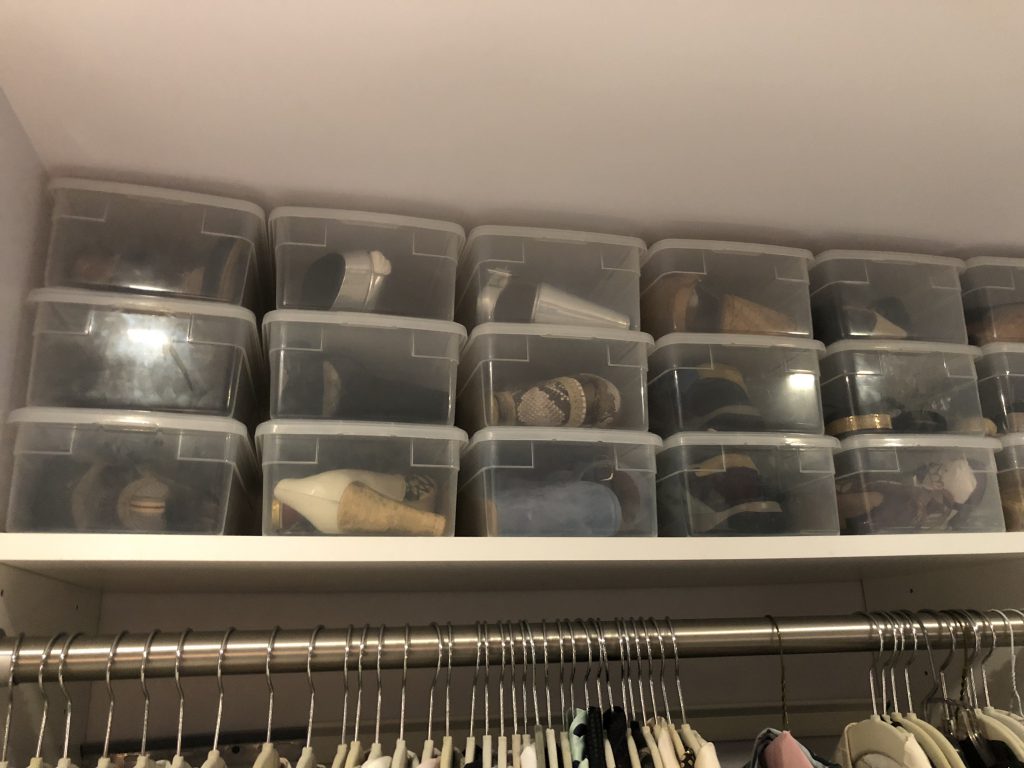
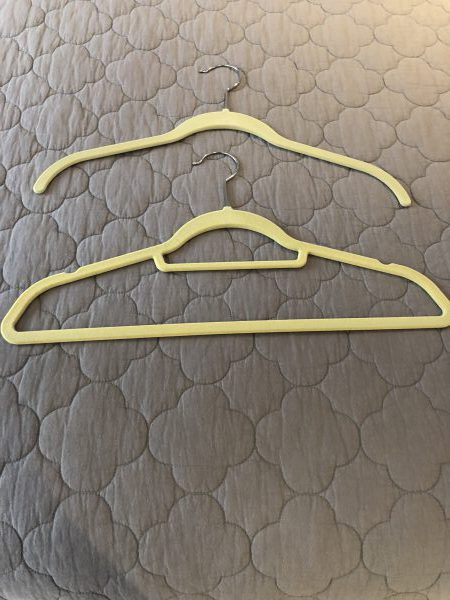
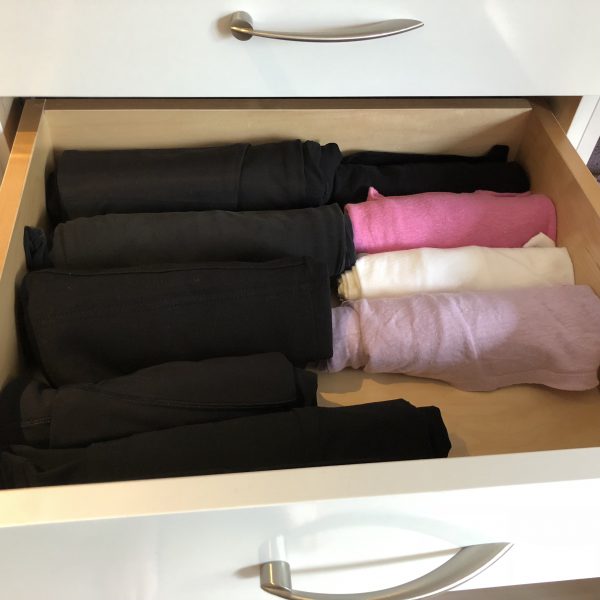
Recent Comments